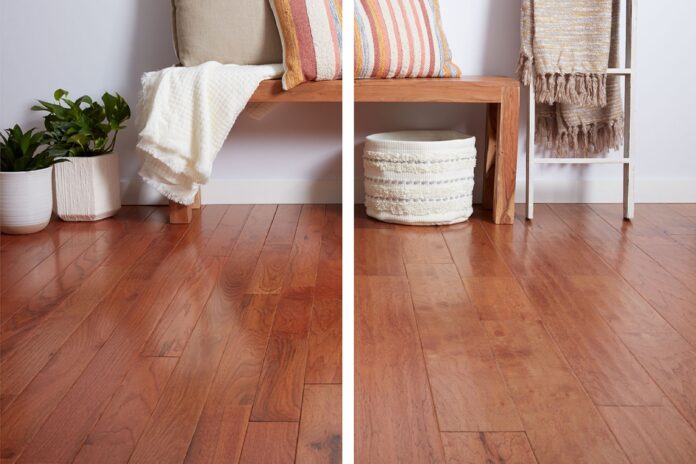If you’re exploring options to give your den a timeless earthy look and feel, hardwood flooring may do the trick. Hence, solid hardwood flooring from Harper Floors can help give your interior the practical upgrade you’re after. But, compared to engineered hardwood, is solid hardwood the better option?
Each of these flooring alternatives has its merits. And while one homeowner may value particular benefits, others may be of a contrary opinion. As such, your choice would largely hinge on what you hold in high regard. Let’s compare these hardwoods to provide a better understanding of what we mean.
Solid Vs. Engineered Hardwood
Solid wood flooring is crafted from hardwood such as maple or walnut. Conversely, engineered wood flooring is made using a combination of hardwood and plywood (the core).
On the surface, both types of flooring look similar, although either one has its inherent properties. For instance, you can sand or refinish solid hardwood many times during its lifespan, a luxury you may not afford with engineered wood. Why? The latter has a relatively thin layer of hardwood which can only be sanded at most once over its useful life.
Appearance
Solid hardwood boards have a narrower profile compared to engineered flooring. Also, you may pick from a wide variety of colors and species to match your interior. Still, the boards create tight seams once installed. You can also choose between pre-finished or unfinished varieties to create a look all your own. Thus, if you’re after customizing your interior space, solid hardwood flooring may be the way to go.
Engineered floorboards tend to be wider than solid hardwood boards. Others come pre-finished, while others sport beveled edges. As a result, you’re likely to notice slight grooves once the boards are installed in your home.
With engineered boards, you’re not spoilt for choice- in terms of color and species. However, picking between either option solely based on appearance would be a matter of personal preference. Hence, we have a tie as far as looks go.
Moisture and Heat Resistance
Although both materials stand up to heat, solid hardwood may warp or disintegrate if exposed to humidity or overly damp conditions. Essentially, although it resists water, it’s not waterproof. Consequently, it’s unsuitable for wet locations such as bathrooms or laundry rooms. Also, if you install it against concrete, water may seep through the slab and cause your boards to swell.
Engineered wood tends to hold up better than solid floorboards, courtesy of its plywood construction. Generally, plywood is more stable, making it less prone to warpage. If your underlayment consists of concrete, it’s advisable to opt for engineered hardwood. And in this regard, engineered wood is the better option.
Cost
If you’re thinking of completing your remodel using pre-finished solid hardwood, expect to pay about $9 per square foot. Typically, prices range from $6 to $14.
On the other hand, engineered flooring costs between $2.5 and $12 per square foot, making it slightly cheaper. So, in terms of price, engineered wood is our winner, but only by a slight edge. But, lower labor costs (which may range between $3 and $9 per sq. ft.) may help reduce your overall costs.
Durability
Solid hardboards are more rugged than engineered boards. The former may last between 30 and 100 years, while the latter has a useful life of about 30 years. As we’ve noted, you can sand and refinish solid hardwood flooring up to three times over its lifespan, helping restore its pristine look by getting rid of scuff marks or scratches.
Nonetheless, engineered wood may only be refinished once before the thin top hardwood layer is exhausted. To keep your flooring looking great, consider applying a fresh coat of varnish over the surface once every few years. But even so, solid hardwood is superior.
Installation
Solid boards feature a groove-and-tongue design, whereby one piece fits into the other snugly. The boards are secured to your subfloor using nails affixed to the ridge(tongue). Unlike interlocked solid boards, engineered alternatives can be glued to your subfloor- an option that most do-it-yourselfers tend to prefer. Other methods include:
- Floating technique
- Staple or nail-down method
The application you select largely depends on the type of product and subfloor. In terms of the multiple installation options, engineered floorboards come out on top.
So, is there a clear-cut winner? No. Each option has its upsides and downsides. And as we pointed out, personal preferences tend to vary. If you’re after an authentic look and longevity, then Harper Floors’ solid hardwood flooring is worth considering. Above all, have a maintenance plan in mind before opting for such floorboards to ensure they last for years.
























